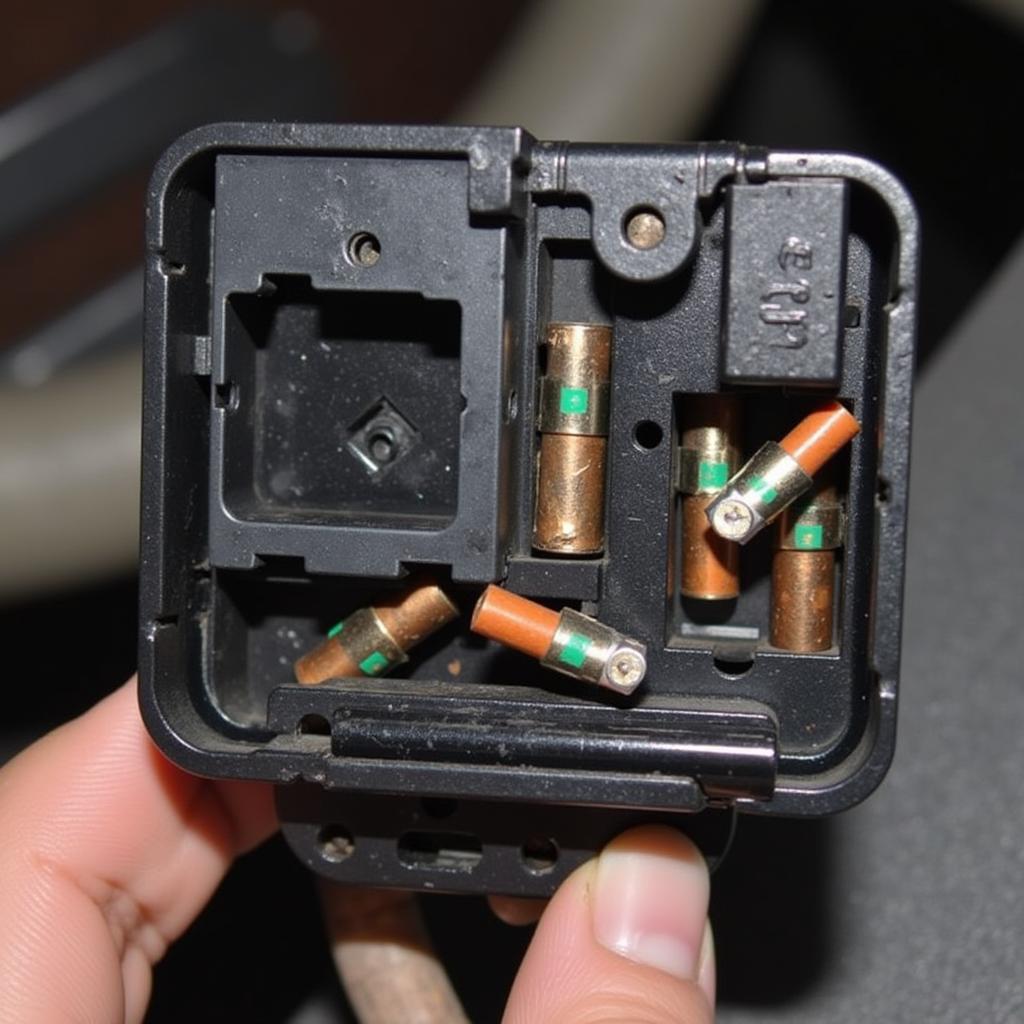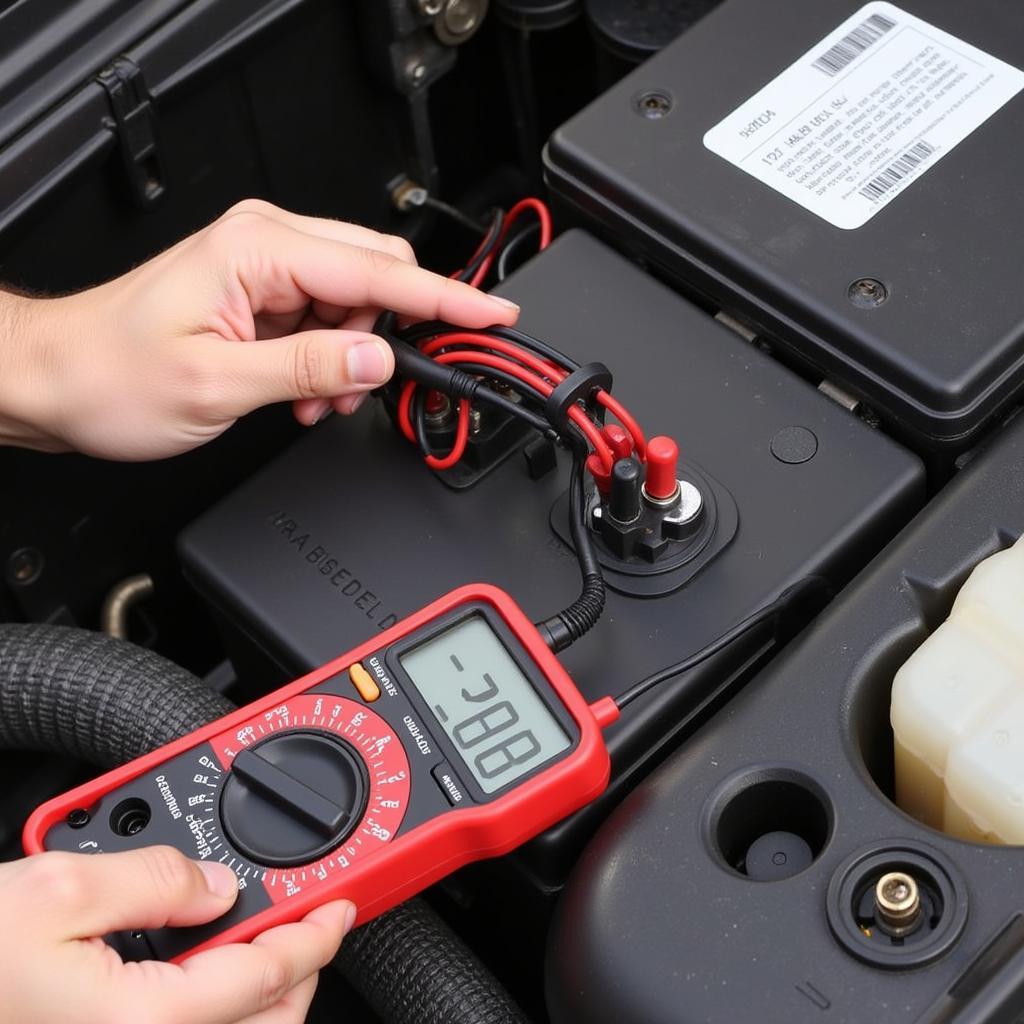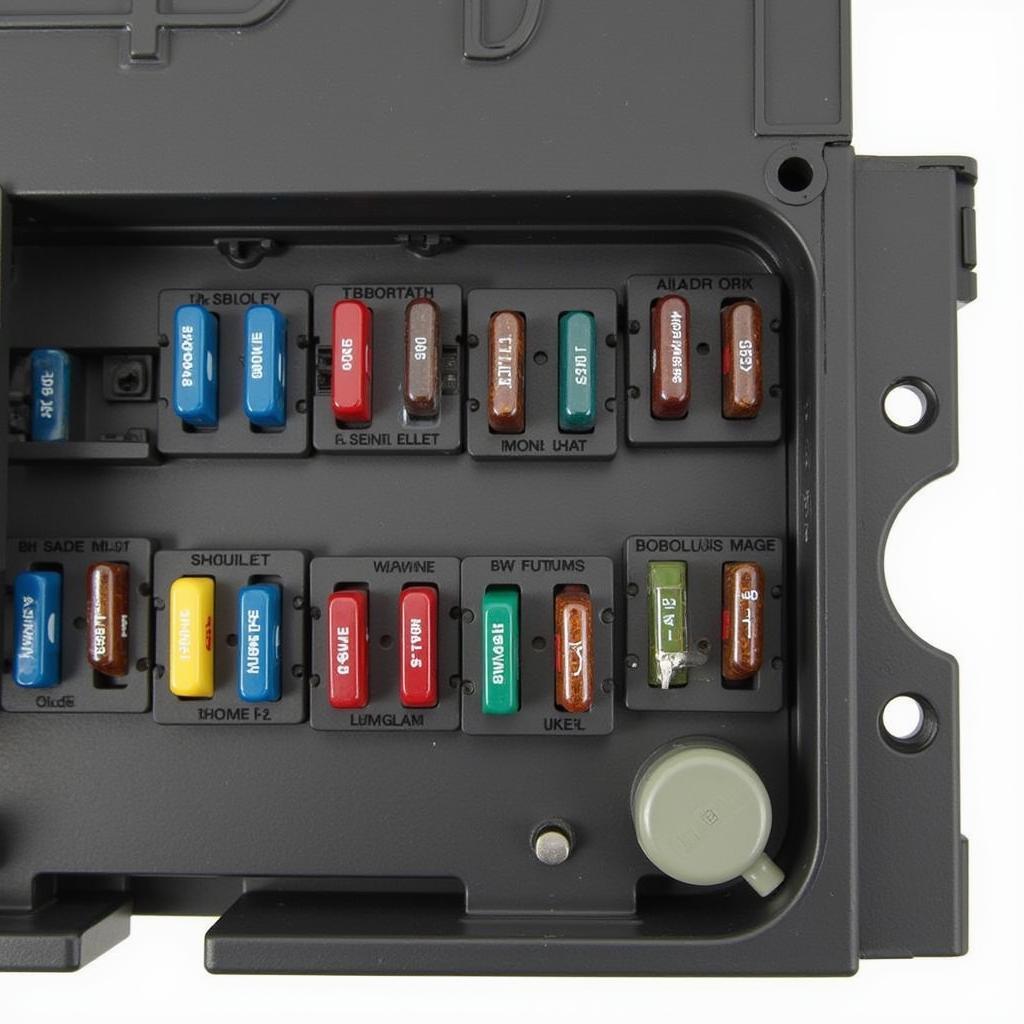An intermittent parasitic draw can be a frustrating car issue, draining your battery unexpectedly and leaving you stranded. Unlike a constant draw, this elusive problem comes and goes, making it difficult to diagnose. This comprehensive guide will delve into the intricacies of intermittent parasitic draws, exploring common causes, effective diagnostic techniques, and solutions to get your car back on the road reliably.
Similar to a parasitic amp draw, an intermittent parasitic draw occurs when a component in your vehicle continues to consume power even after the ignition is turned off. However, the intermittent nature makes it harder to pinpoint the culprit. This can range from faulty relays and switches to problematic modules or even aftermarket accessories.
Understanding Intermittent Parasitic Draw
A parasitic draw, whether constant or intermittent, is an electrical drain on your car’s battery when the vehicle is off. A healthy system should only draw a minimal amount of current (typically around 50 milliamps) to maintain essential functions like the clock and alarm system. Anything significantly higher can lead to a dead battery, especially overnight. The intermittent nature of the draw introduces another layer of complexity, making it appear as though the problem has resolved itself, only to reappear later.
Common Causes of Intermittent Parasitic Draw
Several components can contribute to an intermittent parasitic draw. These include:
- Faulty Relays: Relays are electromechanical switches that control various systems in your car. A malfunctioning relay can stick in the closed position, allowing current to flow continuously, even when it shouldn’t.
- Malfunctioning Switches: Similar to relays, faulty switches can also become stuck, leading to a continuous power drain. This can occur in power window switches, door lock switches, or even the ignition switch itself.
- Glove Box or Trunk Lights: These seemingly insignificant lights can be a surprising source of drain if the switch malfunctions or the light doesn’t turn off completely when closed.
- Aftermarket Accessories: Improperly installed aftermarket accessories, such as stereos or alarms, can create unintended current paths and contribute to a parasitic draw.
- Faulty Modules: Modern cars rely heavily on electronic control modules (ECMs) to manage various systems. A faulty ECM can intermittently draw excessive current.
 Faulty Relay Causing Intermittent Parasitic Draw
Faulty Relay Causing Intermittent Parasitic Draw
Diagnosing an Intermittent Parasitic Draw
Diagnosing an intermittent parasitic draw requires a systematic approach and the right tools. Here are some key steps to follow:
- Confirm the Draw: Use a multimeter to measure the current draw with the ignition off and all doors closed. A reading significantly higher than 50mA indicates a problem.
- Isolate the Circuit: Systematically remove fuses one by one while monitoring the current draw. A drop in current when a specific fuse is removed indicates the problematic circuit.
- Narrow Down the Culprit: Once the circuit is identified, inspect the components within that circuit, such as relays, switches, and modules, for any signs of damage or malfunction.
- Test Individual Components: Use the multimeter to test the resistance and continuity of suspected components to confirm their functionality.
If experiencing an intermittent charger brake warning light, it’s important to note that while seemingly unrelated, electrical issues can sometimes manifest in unexpected ways. It’s always best to check for underlying electrical problems if you notice any unusual warning light behavior.
 Testing for Parasitic Draw with a Multimeter
Testing for Parasitic Draw with a Multimeter
Solutions and Preventive Measures
Once the source of the intermittent parasitic draw is identified, the solution often involves replacing the faulty component. However, preventing future occurrences is equally important. Here are some preventive measures:
- Regular Inspection: Periodically inspect wiring harnesses, connectors, and components for any signs of damage or corrosion.
- Proper Installation of Aftermarket Accessories: Ensure all aftermarket accessories are installed correctly by qualified professionals to avoid creating unintended current paths.
- Address Electrical Issues Promptly: Don’t ignore seemingly minor electrical issues, as they can sometimes escalate into more significant problems, including intermittent parasitic draws. Even something like an intermittent car battery failure can sometimes indicate a developing parasitic draw problem.
“Intermittent parasitic draws can be challenging to diagnose, but with patience and the right approach, they can be resolved effectively,” says John Smith, Senior Automotive Electrical Engineer at Auto Electric Solutions. “Understanding the intricacies of your vehicle’s electrical system is key to tackling these elusive problems.”
 Checking the Fuse Box for a Parasitic Draw
Checking the Fuse Box for a Parasitic Draw
Conclusion
Intermittent parasitic draw can be a frustrating problem, draining your battery unexpectedly. By understanding its causes, employing proper diagnostic techniques, and implementing preventive measures, you can keep your car running smoothly. Don’t let an intermittent parasitic draw drain your battery and your peace of mind. Take control and troubleshoot the issue effectively. If you suspect a problem, consult with a qualified automotive electrician for assistance.
Remember that sometimes a battery dies overnight, even without an apparent parasitic draw. This could be due to other factors, such as an aging battery or extreme temperatures. It’s important to explore all possibilities. A resource like battery dies overnight no parasitic draw can be helpful in understanding this issue. Similar to a car battery intermittent failure, an intermittent parasitic draw can cause intermittent starting problems. Diagnosing and fixing the root cause is crucial for reliable vehicle operation. Just like using a parasitic draw test light, systematically checking your vehicle’s electrical system is essential. Another intermittent issue worth noting is a charger brake warning light intermittent, which although seemingly unrelated, can sometimes be tied to underlying electrical problems.

